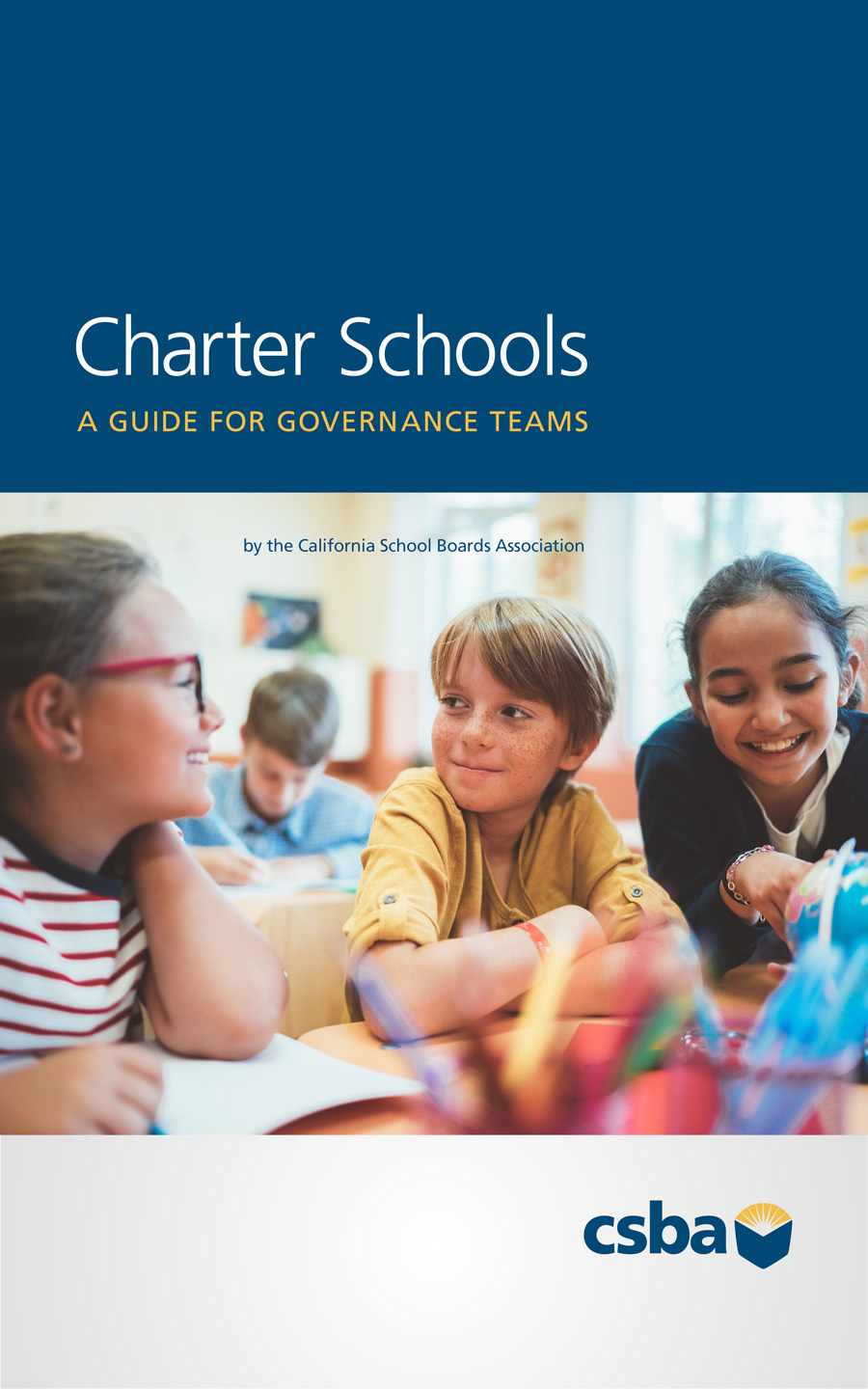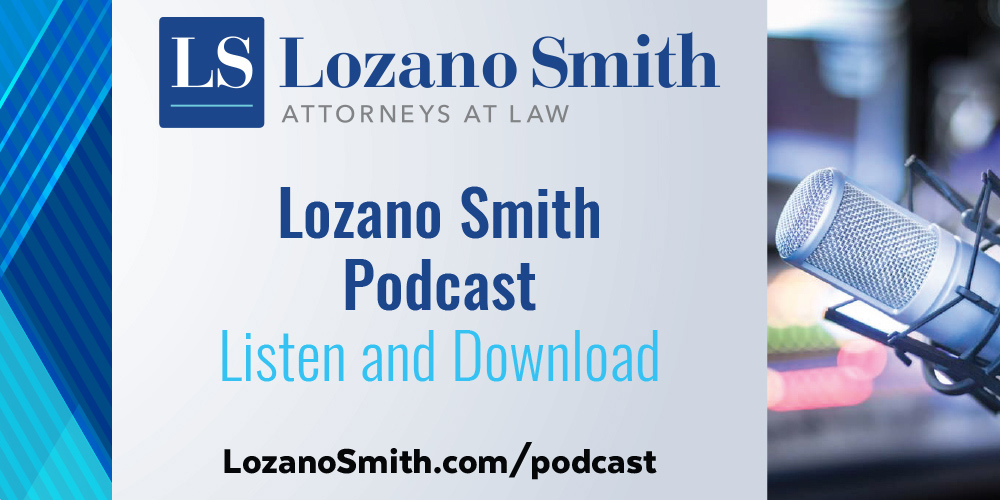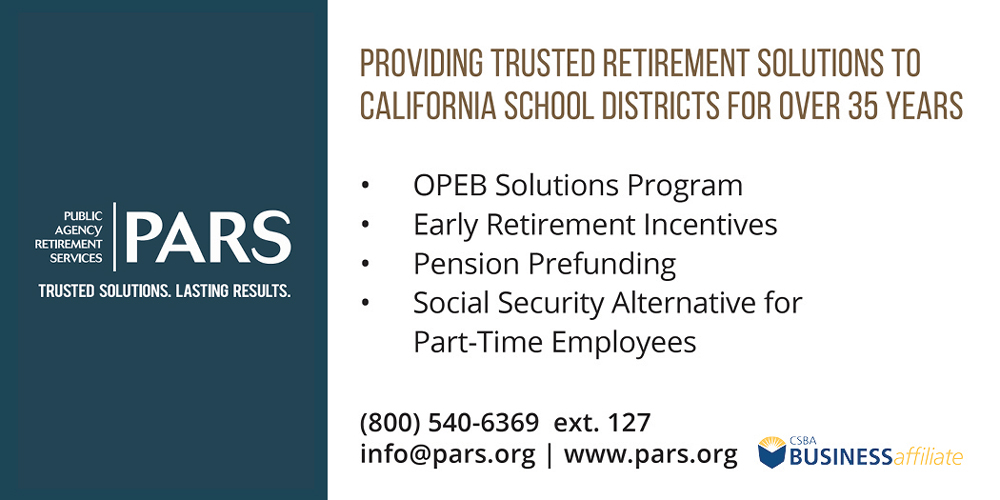
The health order says that individuals should continue to adhere to requirements laid out in the current COVID-19 Public Health Guidance for K-12 Schools in California as well as the COVID-19 Public Health Guidance for Child Care Programs and Providers and guidance on day camps and other youth activities. An update to the Centers for Disease Control and Prevention’s K-12 operations guidance is expected in the near future. “I will continue to monitor the scientific evidence and epidemiological data and will amend this guidance as needed by the evolving public health conditions and recommendations issued by the CDC and other public health authorities,” said Tomás J. Aragón, director and state public health officer.




Troy Flint | tflint@csba.org
Managing Editor:
Kimberly Sellery | ksellery@csba.org
Marketing Director:
Vacant
Staff Writers and Contributors:
Alisha Kirby | akirby@csba.org
Heather Kemp | hkemp@csba.org
Mike Ambrose | mambrose@csba.org
Graphic Design Manager:
Kerry Macklin | kmacklin@csba.org
Senior Graphic Designer:
Mauricio Miranda | mmiranda@csba.org
Susan Heredia | Natomas USD
President-elect:
Vacant
Vice President:
Susan Markarian | Pacific Union ESD
Immediate Past President:
Xilonin Cruz-Gonzalez | Azusa USD
CEO & Executive Director:
Vernon M. Billy
California School News (ISSN 1091-1715) is published 11 times per year by the California School Boards Association, Inc., 3251 Beacon Blvd., West Sacramento, CA 95691. 916-371-4691. $4 of CSBA annual membership dues is for the subscription to California School News. The subscription rate for each CSBA nonmember is $35. Periodicals postage paid at West Sacramento, CA and at additional mailing office. POSTMASTER: Send address changes to California School News, 3251 Beacon Blvd., West Sacramento, CA 95691.
News and feature items submitted for publication are edited for style and space as necessary.

I’ve read countless articles about students with no internet or poor connections, about struggles with mental health and social isolation, about disengagement from school and declining academic performance. Our English learner students are coping with all these challenges — often at a greatly disproportionate level — while simultaneously trying to learn in a school system that is not designed to serve their needs. As a result, the pandemic has compounded the ongoing disparities between English learners and their peers.
Maintenance of equity provisions are meant to help ensure that schools and LEAs serving large proportions of historically underserved groups of students — including students from low-income families, students of color, English learners, students with disabilities and students experiencing homelessness — receive an equitable share of state and local funds allocated for pandemic recovery.
These schools and LEAs historically have been under-funded and are more reliant on state funding than are schools and LEAs with lower concentrations of underserved students. Accordingly, if state or local funds are cut, the maintenance of equity provisions ensure that LEAs and schools serving a large share of students from low-income backgrounds do not experience a disproportionate share of such cuts in fiscal years 2022 and 2023, and that the highest poverty LEAs do not receive a decrease in state funding below their FY 2019 level.
Referred to as “Budget Bill Junior,” the bill outlines many of the agreements reached between the Governor and the Legislature but leaves several items outstanding. It remains to be seen which of these outstanding issues will be resolved in budget trailer bills, which may be released in the coming days.
From these conversations emerged seven common topics that local educational agencies are grappling with as they prepare for the 2021–22 academic year, including the mental and social-emotional health of students and staff, professional development and new hire training, use of one-time funds, and other challenges related to fall planning and implementation.
That’s why CSBA is providing an update to Charter Schools: A Guide for Governance Teams, a guidebook made specifically for board members and superintendents serving as charter school authorizers in California. This update is available in a convenient e-book format on Amazon’s Kindle Store (https://amzn.to/2RMqw4Z).
Since this guidebook was last published in 2016, significant changes to California’s school funding, accountability and assessment systems have impacted all public schools, including charter schools. Charter schools are adapting to a host of new academic content standards and accountability requirements, and charters, districts and county offices of education are all being affected by the implementation of Assembly Bill 1505, signed into law in 2019 and effective as of July 1, 2020. These, and many other updates, are changing the way in which charter schools operate and how governance teams fulfill their responsibilities as they relate to educating all students.
All LEAs are required, in consultation with their communities and specified stakeholder groups, to create a Local Control and Accountability Plan, which details how funds will be used to improve outcomes for students. Boards should consider a discussion on their roles in developing LCAPs and monitoring their implementation, which include:
- Developing a deep understanding of the LCAP’s purpose and process.
- Developing goals and the supports necessary to achieve effective implementation of the strategies in the LCAP.
- Encouraging and participating in the ongoing engagement of a diverse range of stakeholders.
During the 2019–20 academic year, the most recent data available, AAPI students made up roughly 12 percent of the state’s 6.2 million K-12 students. During that period, nearly 88 percent of local educational agencies had Asian American, Filipino and Pacific Islander students enrolled.
“Asian American and Pacific Islander Students in Focus: Demographics and Enrollment Data” (https://bit.ly/3wfMix3) and “Asian American and Pacific Islander Students in Focus: Experiences During the COVID-19 Pandemic” (https://bit.ly/3wi0llI) dive deep into the urgent need to support students in the AAPI community without treating them as a monolith.
ERAF was implemented by statute in 1992 to shift some of the obligation to meet the constitutional minimum funding guarantee in Proposition 98 for K-14 education from the state’s General Fund to local property taxpayers. By creating ERAF, the Legislature redirected approximately one-fifth of property taxes statewide from cities, counties and special districts to school districts and community college districts. By capturing additional local property taxes, the state has been able to offset state General Fund savings.


The framework is meant to set guidance for local districts to make the best possible choices for their students based on research and best practices in mathematics education, Brian Lindaman, one of its writers, said during a May 19 Instructional Quality Commission meeting. The notion that standards for all students would be lowered by new methods that could potentially be used, as many public commenters alluded to, is misguided, he explained.


Which state would you predict would be the leader in computer science education?
It turns out California is not even a close second to Arkansas. For example, in terms of the percent of schools that offer computer science (CS), California ranks 29th in the nation, and Arkansas ranks first. In terms of advancing computer science education policies, again Arkansas ranks as number one, while California is 25th in the nation.
“While all attendees will have access to all the keynote addresses and workshops, in-person attendees will have the added benefit of the Friday evening president’s reception and the networking opportunities that an in-person event provides,” said Gina Cuclis, conference committee vice chair, CCBE Vice President and Sonoma County Board of Education trustee. “We are also working closely with Hyatt Regency Monterey staff on protocols to ensure a safe conference.”
MIG COE Course 1: Foundations of Effective Governance/Setting Direction
MIG Course 4: Human Resources/Collective Bargaining
MIG Course 2: Student Learning & Achievement/Policy & Judicial Review
MIG Course 1: Foundations of Effective Governance/Setting Direction
The Brown Act









